NATO Chief Scientist's Reports and Advice Documents
The North Atlantic Council (NAC) appointed Dr. Bryan Wells (UK) as NATO Chief Scientist from 1 July 2019. In this role, he has three major responsibilities. First, he serves as Chair of the NATO Science and Technology Board (STB). Second, he serves as the senior scientific advisor to NATO leadership, ensuring that appropriate and timely S&T based advice is provided to NATO senior decision makers. Finally, he leads the Office of the Chief Scientist at NATO Headquarters.
As part of the Science & Technology Organization (STO), the OCS generates and delivers evidence-based advice to senior leadership on significant S&T issues, including identifying Emerging and Disruptive Technologies (EDTs) and their impact on security and defence spheres. The OCS Advice Section in NATO HQ builds upon the STO’s research network to provide such advice.
Dr Wells commissioned the first NATO Chief Scientist Research Report (CSRR) in October 2020, on the topic of Women in the Armed Forces. The goal of the CSRR consists of two primary functions:
- Highlight insights from the STO evidence base PoWs to help inform NATO decision-making and situational awareness on specific topic.
- Promote and vehicle the STO and the value of the work done within the organisation in an accessible outreach effort.
Hence, CSRRs provide evidence-based advice or policy insights based on research and analysis activities conducted across the STO. These Reports bring the findings of STO research on a variety of topics to a general audience and contribute to the understanding of NATO’s challenges and priorities, on a case-by-case basis.
About the STO
STO at a Glance: The North Atlantic Council chartered the NATO Science & Technology Organization (STO) to deliver innovation and evidence-based advice that meet the Alliance’s needs in an ever-changing security environment. The work of the STO ensures that NATO will maintain its military and technological edge to face current and future security challenges. The STO gathers the world’s largest research network in defence and security. It brings together national scientists, engineers and analysts, industry and academia to collaborate within a trusted NATO framework.
Science & Technology Trends
Science & technology Trends: 2023-2043 provides an assessment of Science & Technology (S&T) trends and their potential impact on NATO military operations, defence capabilities, enterprise functions, and political decision space. This assessment draws upon the collective insights and research activities of
the NATO Science & Technology Organization (STO), its collaborative network of over five thousand
active scientists, analysts, researchers, engineers, and associated research facilities. These insights
have been combined with an extensive review of the open-source S&T literature, selected national
research programmes, NATO STO technology watch activities, (serious) research games, STO CPoW
(Collaborative Programme of Work) activities, and NATO innovation endeavours. The report is split into
two volumes covering the overall conclusions (Volume 1) and the detailed analysis (Volume 2).
Download Vol. 1
Download Vol. 2
Science & technology Trends: 2020-2040: The report “Science & Technology Trends: 2020-2040” has been produced by the NATO Science and Technology Organization and draws upon insights of some 6000 scientists, engineers and analysts in NATO’s collaborative network. It provides an assessment of the emerging and disruptive technologies endorsed by NATO Heads of State and Government at their meeting in London last December, such as Big Data, Artificial Intelligence, robotics, space and bio technology and hypersonic weapons. The report explains why these technologies are important to the Alliance and how they may develop over the next 20 years.
Reports to NATO Leadership
 AC/323-N(2021)0033: Science & Technology Organisation (STO) Quantum Review: The STO assessment reviews the body of activity and expertise within the STO concerning quantum technologies. The review is informed by relevant research and analysis in the STO Collaborative Programme of Work (CPoW), the Centre for Maritime Research and Experimentation Programme of Work (CMRE PoW), and associated Technology Watch activities.
AC/323-N(2021)0033: Science & Technology Organisation (STO) Quantum Review: The STO assessment reviews the body of activity and expertise within the STO concerning quantum technologies. The review is informed by relevant research and analysis in the STO Collaborative Programme of Work (CPoW), the Centre for Maritime Research and Experimentation Programme of Work (CMRE PoW), and associated Technology Watch activities.
 AC/323-N(2021)0034: Science & Technology Organisation (STO) Autonomy Review: The STO assessment reviews the state of expertise and technical knowledge within the STO concerning autonomous technology from 2010 to the present. This expertise is formed of relevant research and analysis in the STO Collaborative Programme of Work (CPoW), the Centre for Maritime Research and Experimentation Programme of Work (CMRE PoW), and associated Technology Watch activities
AC/323-N(2021)0034: Science & Technology Organisation (STO) Autonomy Review: The STO assessment reviews the state of expertise and technical knowledge within the STO concerning autonomous technology from 2010 to the present. This expertise is formed of relevant research and analysis in the STO Collaborative Programme of Work (CPoW), the Centre for Maritime Research and Experimentation Programme of Work (CMRE PoW), and associated Technology Watch activities
 AC/323-N(2021)0037: Science & Technology Organisation (STO) Analysis of Technology “Weak Signals”: This note identifies new “weak” technology signals, both within existing EDTs and in addition to them.The assessment is based on a review of current technology assessments, national research programs, exploratory data analytics of public and proprietary datasets of academic and industrial activities, and STO Technology Watch endeavours.
AC/323-N(2021)0037: Science & Technology Organisation (STO) Analysis of Technology “Weak Signals”: This note identifies new “weak” technology signals, both within existing EDTs and in addition to them.The assessment is based on a review of current technology assessments, national research programs, exploratory data analytics of public and proprietary datasets of academic and industrial activities, and STO Technology Watch endeavours.
Advice – Presentations
Science & Technology Trends & Insights: Anticipating and Understanding Future Defence S&T Developments
Chief Scientist's Reports
NATO Chief Scientist Research Reports provide evidence-based advice and policy insights based on
research and analysis conducted across the STO. Released on a case-by-case basis, these reports bring
the findings of STO research to a general audience and contribute to the understanding of NATO’s
challenges and priorities.
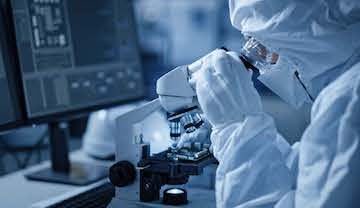 |
Impact of technological trends on Chemical, Biological, Radiological and Nuclear (CBRN)
The report summarizes the most important findings from the NATO Science & Technology Organization Long-Term Scientific Study (LTSS) on CBRN Defence, TR-HFM-273, conducted in the period 2016–2020 and published in June 2021. The Report has a joint foreword by the Chief Scientist, and Dr Janet Blatny, FFI(NOR), who was chair of the LTSS.
Download report |
 |
NATO UNCLASSIFIED |
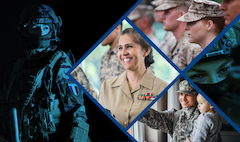 |
Women in the Armed Forces
NATO’s Science and Technology Organization (STO) has conducted research to support women’s roles in NATO armed forces. In 2000 the STO conducted one of its first activities that explicitly considered the impacts of military service on women, exploring the different load carriage performance between servicemen and servicewomen.
Download report |
 |
PUBLIC RELEASE |
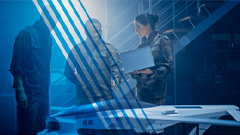 |
Autonomous Technologies
Autonomous Technologies / Autonomy / Robotics and Autonomous Systems (RAS) has/have proven to be a key element of the future battlespace reducing risks and augmenting military capabilities transforming profoundly the strategic calculus of modern warfare. Thus becoming an important area for NATO military and security capabilities. Therefore, the Office of the Chief Scientist contributes to develop knowledge, increase awareness and spur integration of ever mature autonomous technologies building on the work of Science & Technology Organization (STO). The Chief Scientist Research report on Autonomous Technology is the third of a series and addresses the body of the STO research in this area over the past decade covering matters of interoperability, system verification, exploration of platform autonomy across various domains of operations.
Download report
|
 |
NATO UNCLASSIFIED
|
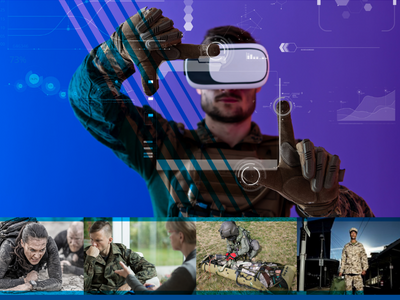 |
Advancing the NATO Special Operation Forces (SOFs) Lifecycle
The Special Forces community / Special Operation Forces (SOFs) represents/represent a central tenets of NATO and Allies capability(ies). Yet, the persistent deployment of (O)operational (F)forces introduces concerns on human performance across the entire operator lifecycle – Identify, Prepare, Assess, Select, Train, Retain and Preserve. These issues comprise both physical, mental and emotional spheres. The Office of the Chief Scientist addresses those criticalities increasing awareness on human performance, while informing decision makers on optimal effectiveness, preparation and preservation of the current and future SOF.
Download report |
 |
NATO UNCLASSIFIED |
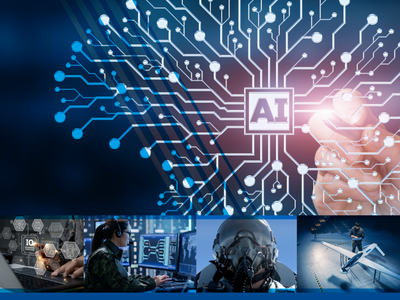 |
Artificial Intelligence (AI) Review
Since the introduction of NATO’s New Strategic Concept and AI Strategy, it is clear how fundamentally AI technologies affect the nature of warfare, political and military success, and the resulting capabilities to maintain technological-edge. The NATO Chief Scientist has observed that “Of all the Emerging and Disruptive Technologies (EDTs) considered by NATO, Artificial Intelligence (AI) is the development area that attracts the most interest and attention, both in the defence and security community and civilian domains. Unlike the other EDTs, AI is a general‑purpose technology with many potential applications, and the scope of research for NATO’s Science & Technology Organization (STO) is therefore considerable.” – Dr. Bryan Wells. In the direction of an increasingly Intelligent, Interconnected, Distributed and Digital (I2D2) strategic thinking and warfighting capabilities, the OCS draws upon STO’s last decade of research activities on AI spanning questions of human‑machine symbiosis, logistics and predictive maintenance, advanced algorithms, training and simulation, and command, control, communication, and computing. The report aims to deepen the understanding of military, civilian, and NATO decision‑makers and audiences on AI’s impact on military operations, defence capabilities and decision‑making, especially as the use and application of AI techniques continue to grow.
Download report |
 |
NATO UNCLASSIFIED |
